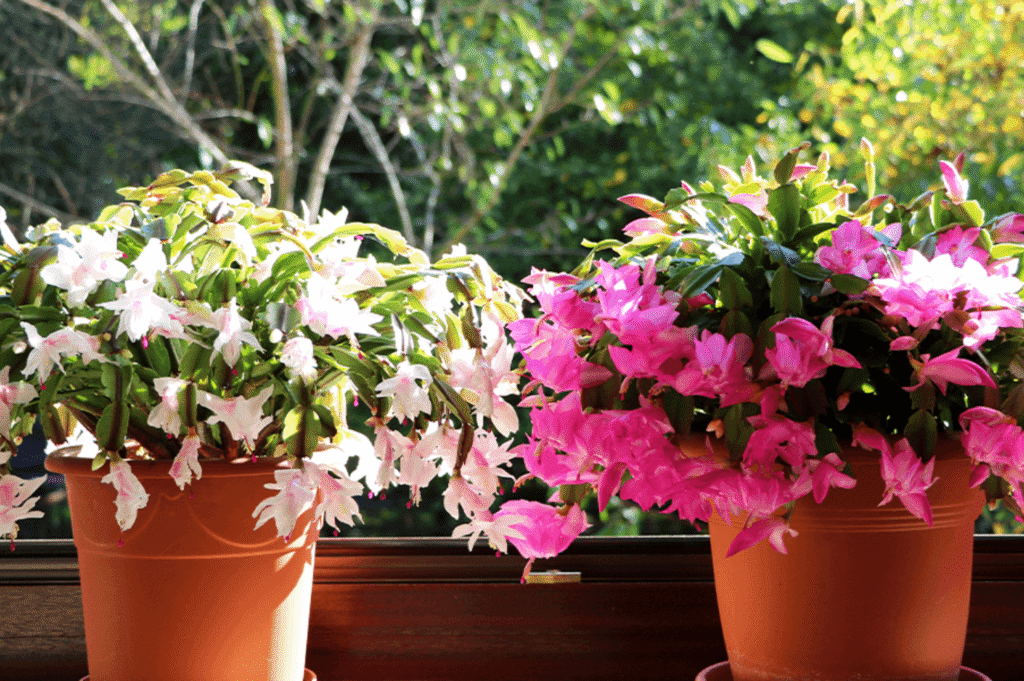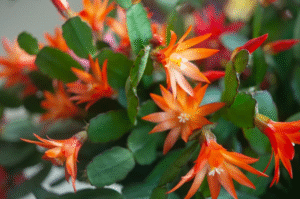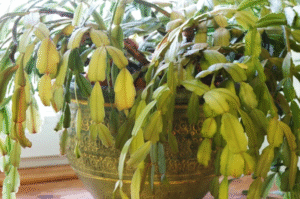If your home or office doesn’t get much sunlight, you might wonder: Can a Christmas cactus grow in artificial light? The answer is yes. With the right type of light and care, your Christmas cactus can not only survive but thrive and bloom beautifully, even without natural sunlight.
In this guide, we’ll explain how artificial light can support healthy growth and what setup works best.
Does a Christmas Cactus Need Natural Sunlight?
Not necessarily. While the Christmas cactus (Schlumbergera) prefers bright, indirect sunlight, it can adapt well to artificial light. In its native habitat, it grows under the canopy of tropical forests, meaning it naturally thrives in filtered light, not harsh direct sun.
So if you’re growing your plant in a room with no natural light, a grow light can be a great solution.
What Kind of Artificial Light Works for Christmas Cactus?
To grow and bloom well, a Christmas cactus needs a light source that supports photosynthesis and flower development. Here’s what to consider:
1. Full-Spectrum LED Grow Lights
These are the best choices for indoor gardeners. Full-spectrum lights provide a balance of warm and cool wavelengths, mimicking natural daylight.
Why do they work well?
- Support healthy green growth and flowering
- Energy-efficient and long-lasting
- Safe to use near plants (minimal heat output)
Look for lights in the 5000K to 6500K color temperature range.
2. Fluorescent Lights (T5 or T8)
Fluorescent bulbs are another good option, especially for larger plant setups. They offer a soft, diffused light that is easy on the plant.
Advantages:
- Budget-friendly
- Effective for growing multiple plants
- Can be installed under shelves or cabinets
How Many Hours of Artificial Light Does a Christmas Cactus Need?
A Christmas cactus should receive 10 to 12 hours of light per day during the growing season (spring through early fall). As winter approaches, reduce the light to about 8 to 9 hours daily, and increase the darkness period to 14 to 16 hours to trigger blooming.
Using a timer can help maintain a consistent light cycle, which is especially important for flower formation.
Setting Up the Light Properly
Proper light placement ensures the plant receives enough exposure without being stressed.
- Keep the light 6 to 12 inches above the plant
- Avoid placing the light too close to prevent leaf damage
- Use a stand, clip-on lamp, or hanging fixture, depending on your space
- Make sure the light reaches the top of the plant, as in natural conditions
Signs Your Christmas Cactus Is Happy Under Artificial Light
If your setup is working, you’ll notice:
- Healthy green color and firm stems
- New segment growth
- Buds forming in fall or early winter
- Steady, compact growth with no stretching
If the plant looks pale, leggy, or stops flowering, it may need more or less light, or the light might be too far away.
Can a Christmas Cactus Bloom Under Artificial Light?
Yes, it can. The key is adjusting the light schedule to simulate natural seasonal changes. Christmas cacti need a period of longer nights and cooler temperatures to trigger blooming. By limiting light exposure and increasing dark hours in fall, you encourage the plant to develop flower buds.
Be sure to reduce watering slightly and avoid moving the plant around during the bud formation stage.
Common Mistakes to Avoid
- Using regular desk lamps or soft white bulbs (they lack the full spectrum)
- Leaving lights on all night (the plant needs a dark period)
- Placing the light too far away or too close
- Forgetting to simulate seasonal light changes for blooming
Final Thoughts
So, can a Christmas cactus grow in artificial light? Absolutely. These adaptable plants can thrive in homes, apartments, or offices with little to no natural sunlight, as long as you use a quality full-spectrum grow light and maintain a proper light/dark schedule.
Whether you’re an experienced plant parent or just getting started, artificial light makes it easy to enjoy this unique, low-maintenance plant year-round.






